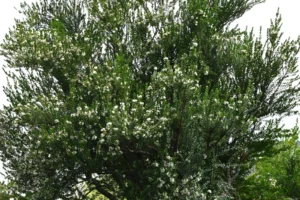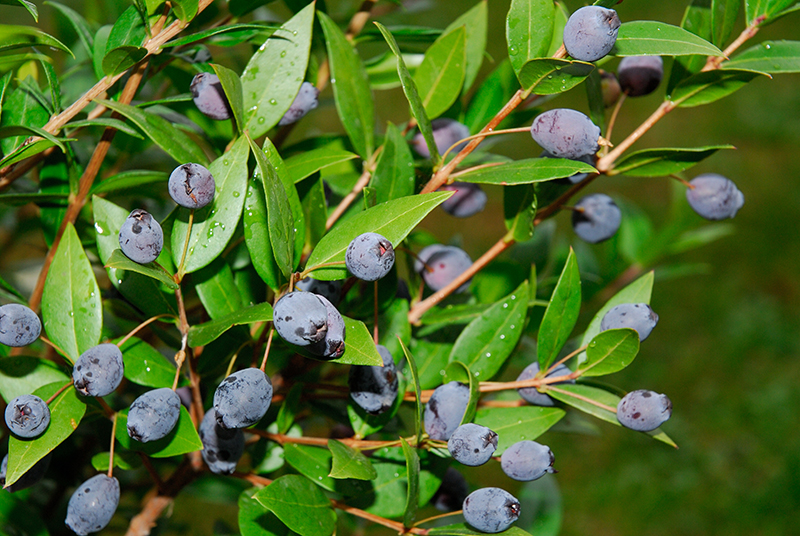THE MYRTLE TREE
Myrtus communis L.
Myrtaceae
The myrtle is a Mediterranean plant with multiple properties, and since ancient times, it has been appreciated for its symbolic, aromatic, and medicinal value. Its dark, fragrant fruits are the main ingredient of the renowned myrtle liqueur, typical of Sardinia. Indeed, it is said that the myrtle does not grow in many areas of Italy.
📍 Origin and diffusion
- The myrtle is a very ancient plant. Its origins date back more than 5,000 years ago, and there are traces of its use by Mesopotamians, Egyptians, Greeks and Romans.
- It is native to the Mediterranean region and grows spontaneously in Italy (mainly in Sardinia, Sicily and along the Tyrrhenian and Adriatic coasts), Spain, Greece, North Africa and the Middle East.
- It prefers hot and dry climates and is drought-resistant.
- It adapts to poor, sandy, or calcareous soils with good drainage but cannot tolerate water stagnation.
- Resistant to salt, it also grows in marine environments.

🔎 MYTHS AND INTERESTING FACTS
✔ Symbol of love and purity: In ancient times, it was consecrated to Venus and used in wedding rites
✔ Myrtle liqueur: This is a specialty of Sardinia and Corsica, made by infusing the berries in alcohol.
✔ Officinal properties: It is a natural antiseptic used in infusions and herbal teas to treat coughs and inflammations.
✔ Culinary herb: Its leaves and berries are ideal for seasoning roasted meats, and we use it in our meat dressings, such as in the Wild Sour Cherry Ketchup.
📜 Tradition and culture
In Greek mythology, the myrtle tree was consecrated to Aphrodite and used to create crowns for athletes and newlyweds. The Romans used it in feasts and religious ceremonies.
👉 Today, the myrtle is still a symbol of the Mediterranean region and Sardinian tradition, known for both its unique scent and its uses in gastronomy and natural medicine. 🌿🍷
These contents were written and researched by the owners of the SiGi Agricultural Company in collaboration with the students of the Agricultural Technical Institute of Macerata.
If you would like to contribute to expanding the descriptions of these varieties, you can send an e-mail to info@agricolasigi.it
We launched the e-museum of ancient fruits thanks to a social farming project of the Marche region. The translation is by komalingua
This project enabled five young people with cognitive impairments, aged 20 to 25, to work on the farm. They were selected by psychologists and Anffas social workers, supported by the professional educator Il Faro and supervised by UniMc researchers. Coldiretti Marche handled communication and distribution.
This unique and challenging project led to the creation of both a physical and virtual museum of ancient fruits in SiGi’s garden. This is not only a great honor but also a significant commitment that we are willing to continue with everyone’s support. You can contribute to our projects by choosing our products, or you can do so directly here:

